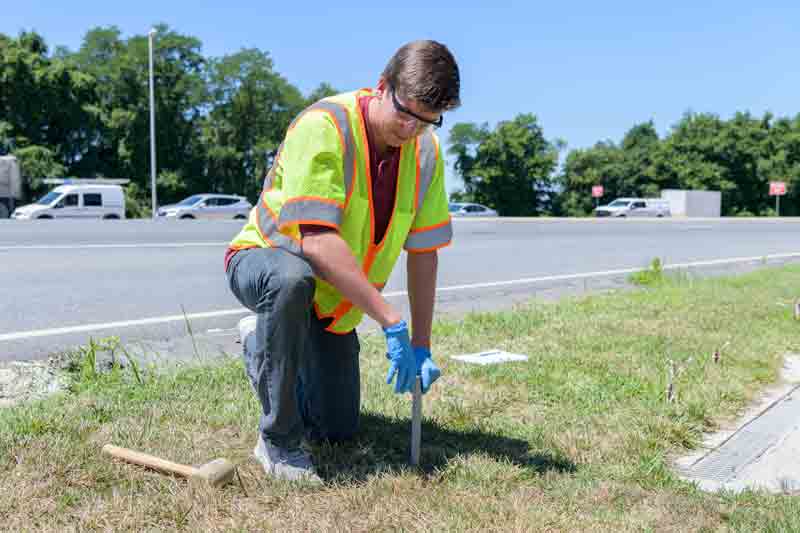Michael Rechsteiner researches biochar and how it can help sustain our environment
Michael Rechsteiner is a senior environmental engineering major from Middletown, Delaware.
Q: What is your research focus?
Rechsteiner: Biochar is a carbon-rich cousin of charcoal that is made by upcycling biomass, such as wood scraps, manures, poultry litter and other organic waste. I am studying the effect of different microbes in varying amounts of biochar-amended soil, as well as analyzing the different types of bacteria found in biochar-amended soil compared to untreated soil.
Q: What interests you most about this?
Rechsteiner: There is a lot of potential for biochar to help sustain our environment. Soil has a large role on our planet, whether we consider its nutritional value for the growth of plants or its ability to absorb roadway runoff. Biochar could be a solution that optimizes the soil’s ability to perform these tasks. At UD, I am working with Julie Maresca, associate professor of civil and environmental engineering, and Christine Chapman, a research assistant in the water science and policy program, to understand how different combinations of microbes and biochar can allow water to infiltrate the soil at higher rates and minimize roadway runoff, which could lead to less pollution in area bodies of water. Biochar also is thought to make the soil more nutrient rich, which would be good for plants.
Q: What is a typical day like?
Rechsteiner: A typical day consists of completing a step in the procedure of my laboratory experiments. Sometimes this involves preparing or analyzing soil samples, other times it involves extracting DNA from field soil samples to learn what types of microbes are found in biochar-amended soil compared to normal soil. In the lab, I also am incubating two known types of microbes, baccilus and p. syringae, in a mix of soil with varying percentages of biochar to test against soil samples with no microbes in them. The hope is to determine if the microbes and biochar help to create soil aggregates—or clumps—that can change how water flows between soil clumps and also how water is absorbed and held inside them, all of which may help manage water runoff.
Q: What is the coolest thing you’ve gotten to do on the project?
Rechsteiner: The coolest thing I’ve gotten to do on the project, so far, was extracting DNA from soil samples and then using a microbiology technique called polymerase chain reaction (PCR) to break down, copy and replicate the DNA in the soil samples. Then we run something called a nanodrop test to get a reading of how much DNA we are working with. I haven’t done a lot of microbiology work before, and I thought it was cool turning dirt into really clear strands of DNA. The nanodrop machine was crazy. I put a drop of clear substance in the nanodrop machine and it told me the concentration of DNA present in the sample.
Q: What has surprised you the most about your experience?
Rechsteiner: What has surprised me most is the amount of time and effort needed to prepare the soil samples in order to ensure the legitimacy of our results.
Q: Dreaming big, where do you hope this work could lead?
Rechsteiner: I hope this work could lead to discovering the best possible way to amend soil with biochar, thus enhancing its ability to sustain our environment. Putting biochar alongside the road is a practical use for this product. After storms, the runoff from the streets could be absorbed and impact the amount of pollution infiltrating the soil.
Q: If you had to summarize your experience in only one word, what would it be?
Rechsteiner: Beneficial
Q: What do you enjoy when you are not doing research?
Rechsteiner: I really enjoy playing basketball, going on hikes and spending time with my friends.

